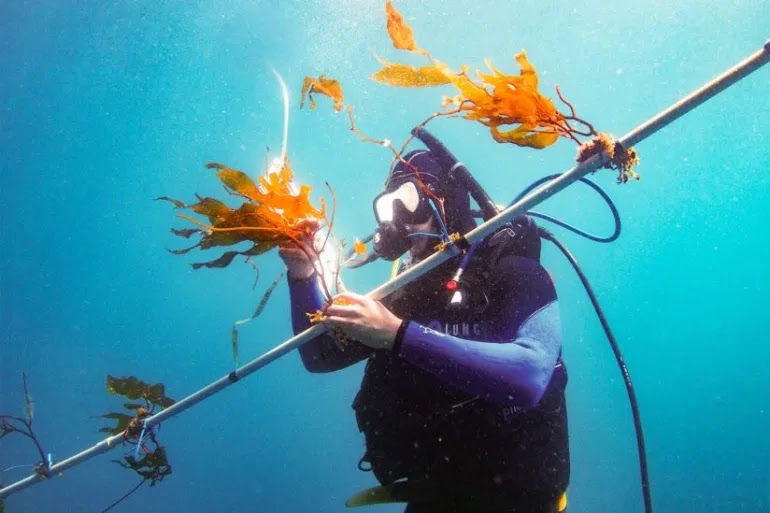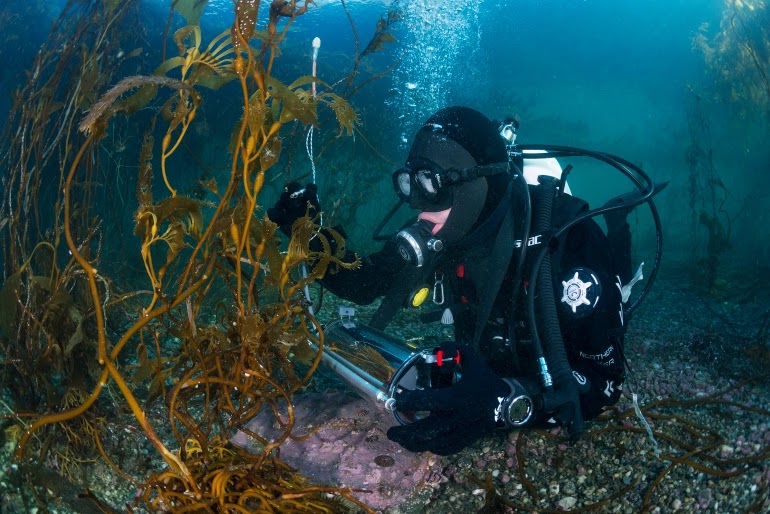The world now relies on the production of many types of biofuels used to power cars, airplanes, ships and trucks, on high-yield agricultural crops, such as corn, soybeans and sticks.
However, The National Research Council has indicated that generating biofuels from feedstocks like corn and soybeans can increase water pollution. Farmers use pesticides and fertilizers on the crops that can end up polluting streams, rivers and lakes. Despite those well-evidenced drawbacks, 7% of the nation’s transportation fuel still comes from major food crops. And nearly all of it is corn-based ethanol.
As scientists continue to search for the role that our oceans can play in finding alternatives to fossil fuels, scientists from the University of Southern California have developed the “kelp elevator”.
This technology increases algae growth and provides high-yield biofuels in an effort to reduce the devastating impact of humankind on Earth, according to a research paper published in the Renewable and Sustainable Energy Review on February 19.
A safe source of biofuels
Macrocystis pyrifera can grow at an astonishing rate of 35 cm (14 inches) per day, given ideal conditions are provided, as this alga constantly forms new veins, up to 30 meters in length, that can be cut without affecting the growth of the algae. Because if not cut, it will be damaged and die.
And because kelp is a precursor, its composition lacks the solid substance lignin, which complicates the process of converting ground crops into fuel.
kelp also absorbs carbon dioxide, which in turn raises the pH and oxygen levels in its growth environment, so its use of biofuel helps reduce ocean acidification.
depth-cycling the kelp
Farming kelp requires overcoming a few obstacles. To thrive, kelp has to be anchored to a substrate and only grows in sun-soaked waters to about 60 feet deep. But in open oceans, the sunlit surface layer lacks nutrients available in deeper water.
To maximize growth in this ecosystem, the scientists had to figure out how to give kelp a foothold to hang onto, lots of sunlight and access to abundant nutrients. And they had to see if kelp could survive deeper below the surface.
So, Marine BioEnergy invented the concept of depth-cycling the kelp, and USC Wrigley scientists conducted the biological and oceanographic trial.
The kelp elevator consists of fiberglass tubes and stainless-steel cables that support the kelp in the open ocean. Juvenile kelp is affixed to a horizontal beam, and the entire structure is raised and lowered in the water column using an automated winch.
Beginning in 2019, research divers collected kelp from the wild, affixed it to the kelp elevator and then deployed it off the northwest shore of Catalina Island, near Wrigley’s marine field station. Every day for about 100 days, the elevator would raise the kelp to near the surface during the day so it could soak up sunlight, then lower it to about 260 feet at night so it could absorb nitrate and phosphate in the deeper water. Meantime, the researchers continually checked water conditions and temperature while comparing their kelp to control groups raised in natural conditions.
“We found that depth-cycled kelp grew much faster than the control group of kelp, producing four times the biomass production,” Kim said.
Better use of the oceans
“The good news is the farm system can be assembled from off-the-shelf products without new technology,” said Brian Wilcox, co-founder and chief engineer of Marine BioEnergy. “Once implemented, depth-cycling farms could lead to a new way to produce affordable, carbon-neutral fuel year-round.”
Cindy Wilcox, co-founder and president of Marine BioEnergy, estimates that it would take a Utah-sized patch of ocean to make enough kelp biofuel to replace 10% of the liquid petroleum consumed annually in the United States. One Utah would take up only 0.13% of the total Pacific Ocean.
This technology could open the way for the cultivation of vast areas of the ocean that lack nutrients and where kelp usually does not grow, and use it as biofuel instead of the one that grows naturally, thus we can protect the vital carbon sinks that the algae provides us.
The team urged more research in this area, as much work remains to be done before we can know the viability of the experiment, including the costs and energy requirements for growing, transporting and converting kelp biomass into liquid fuel.
Other scientists – such as biologist Scott Lendell at the Woods Hole Oceanographic Institution – are also working on artificial selection of larger, more likely and suitable species of kelp for use as a biofuel.
In a statement to the foundation’s press release, Lendell said in 2019 that “in a hotter and drier future, it will be difficult to find a better biofuel resource than cultured seaweed that does not require arable land, fresh water, or fertilizer derived from fossil fuels ” Unlike agricultural crops. “
Sources:
- https://www.sciencedirect.com/science/article/pii/S3?via%3Dihub
- https://news.usc.edu/182840/kelp-as-biofuel-ocean-seaweed-energy-usc-scientists/
- https://www.whoi.edu/news-insights/content/king-kelp/



